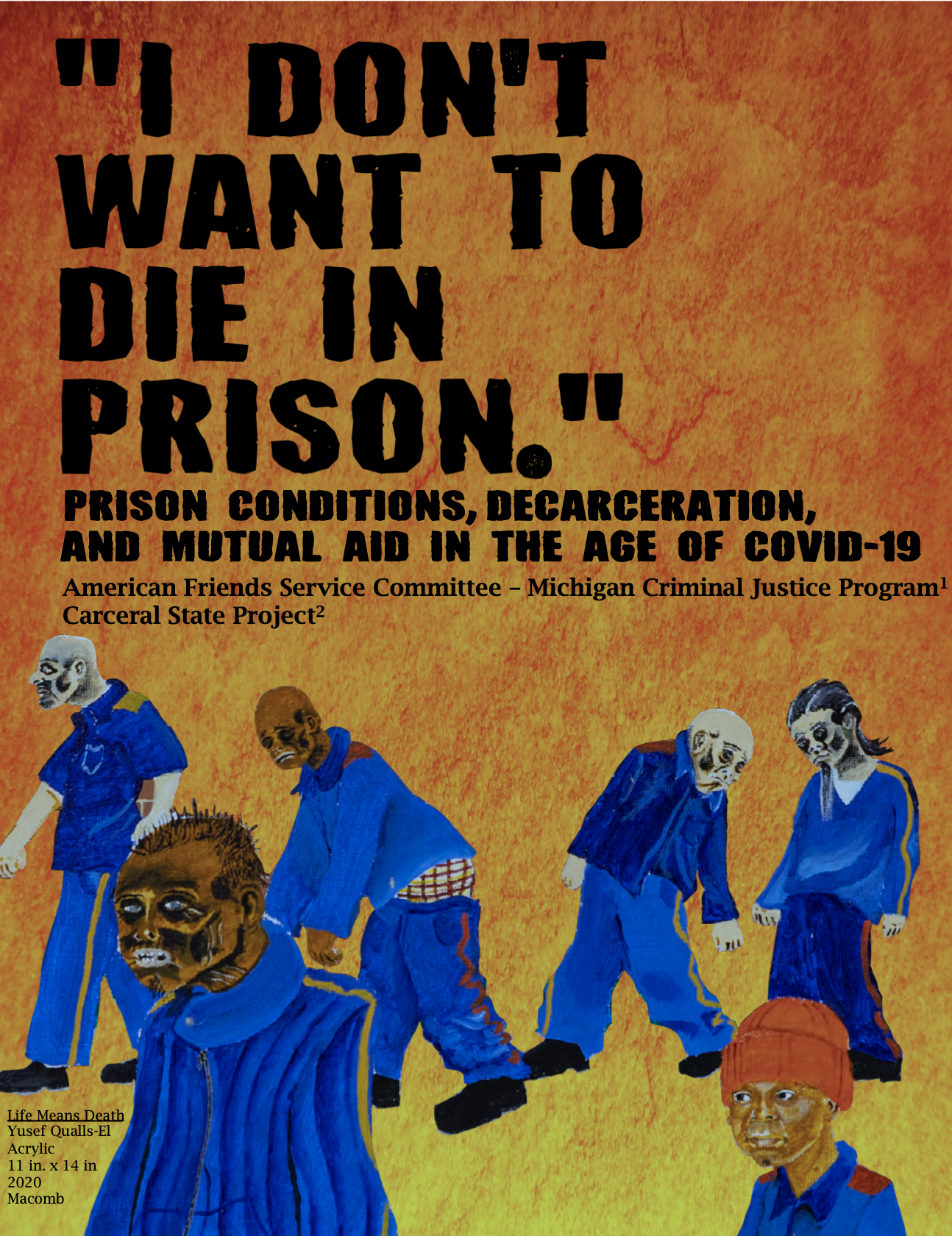“I Don’t Want to Die in Prison.”
Prison Conditions, Decarceration, and Mutual Aid in the Age of COVID-19
Introduction
As of July 2020, seven of the top ten coronavirus clusters in the United States are in jails and prisons. As the number of cases and deaths continue to rise, carceral systems around the country are faced with the reckoning of two public health crises: mass incarceration and COVID-19. Michigan was among the first states to be severely impacted by the pandemic; Michigan confirmed over 7,500 cases by the end of March. Criminal justice advocates throughout the state quickly recognized the need for large-scale decarceration to protect elderly and long-serving people and allow for social distancing inside overcrowded facilities. Only those measures would have prevented the massive spread of COVID-19 inside Michigan prisons.
But those measures were not taken. Cries for decarceration fell on deaf ears as the virus ripped through the Michigan Department of Corrections (MDOC), infecting over 3,871 people in 15 facilities by mid-July and killing 68. Those who have died from COVID-19 in Michigan prisons were mostly lifers or long-serving people who would have been spared had the state initiated compassionate release when advocates called for those measures in March and April 2020.3
From the start of the COVID-19 pandemic, conditions inside were--and remain--abhorrent. Lockdown, apathy for the sick, forced segregation, and decrepit re-opened facilities precipitated men and women hiding their symptoms, exposing others and, in the worst cases, dying in their cells.
This white paper presents an evidence-based case for decarceration as the only humane and meaningful response to the COVID-19 pandemic in prison. It includes an overview of the relationship between prisons and public health, details about the current conditions inside Michigan prisons, recommendations for policy changes that must be implemented, examples of compassionate approaches to communal care, and evidence that our elected officials are culpable for the deaths of dozens of people in prison. The accounts of current prison conditions are drawn from over 280 pages of documentation including JPays, phone calls, and letters from those who have survived COVID-19 while incarcerated.

